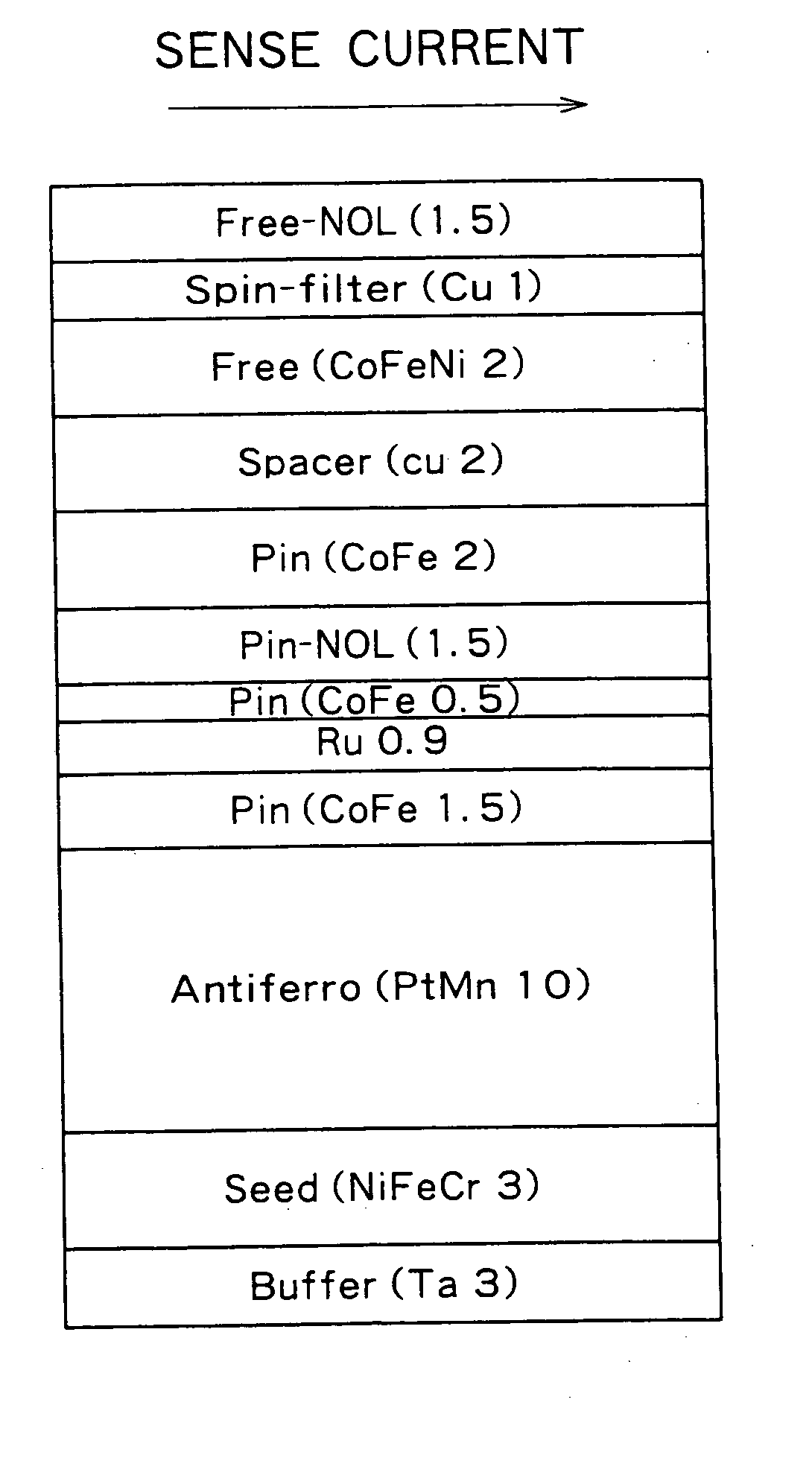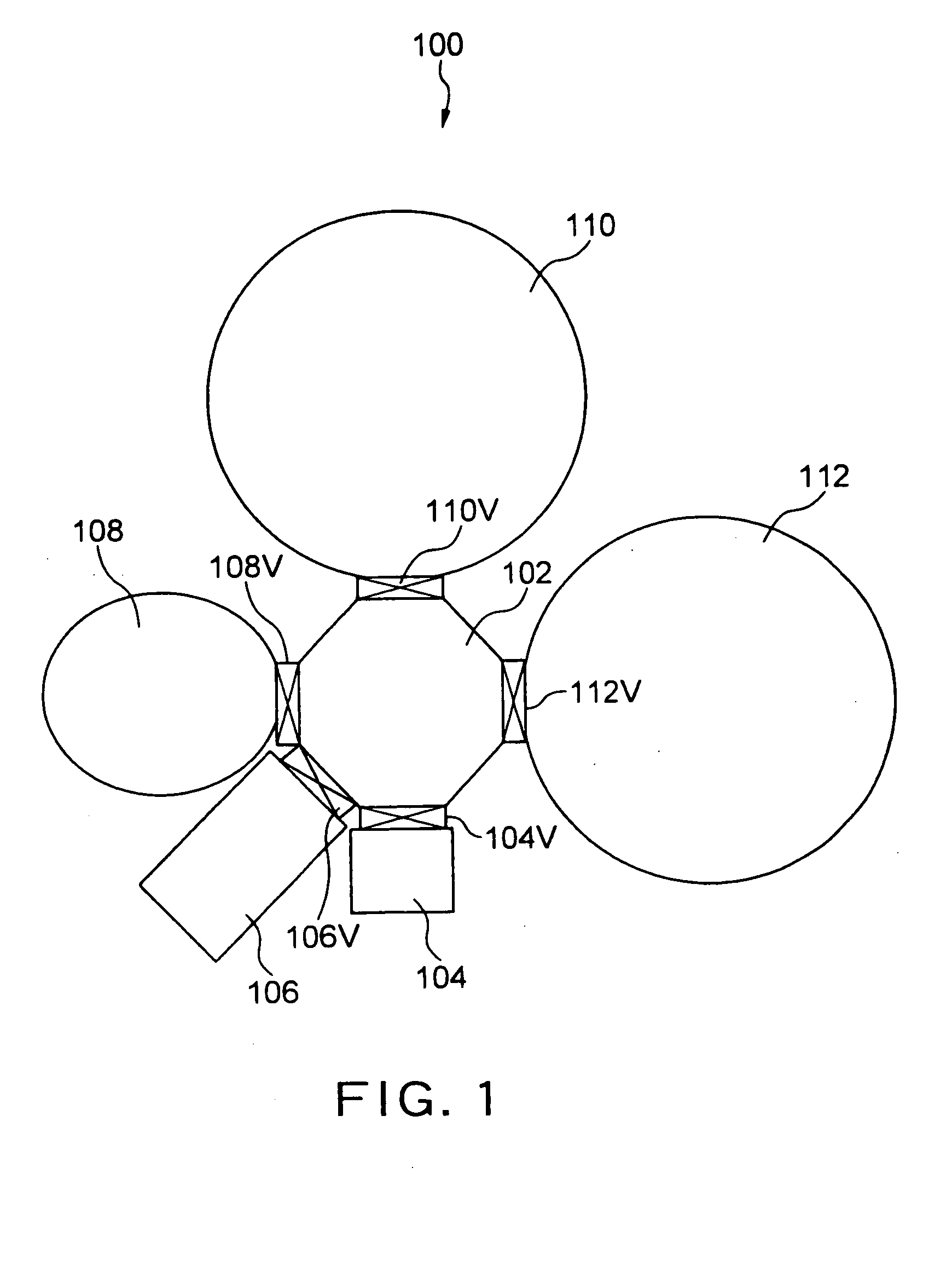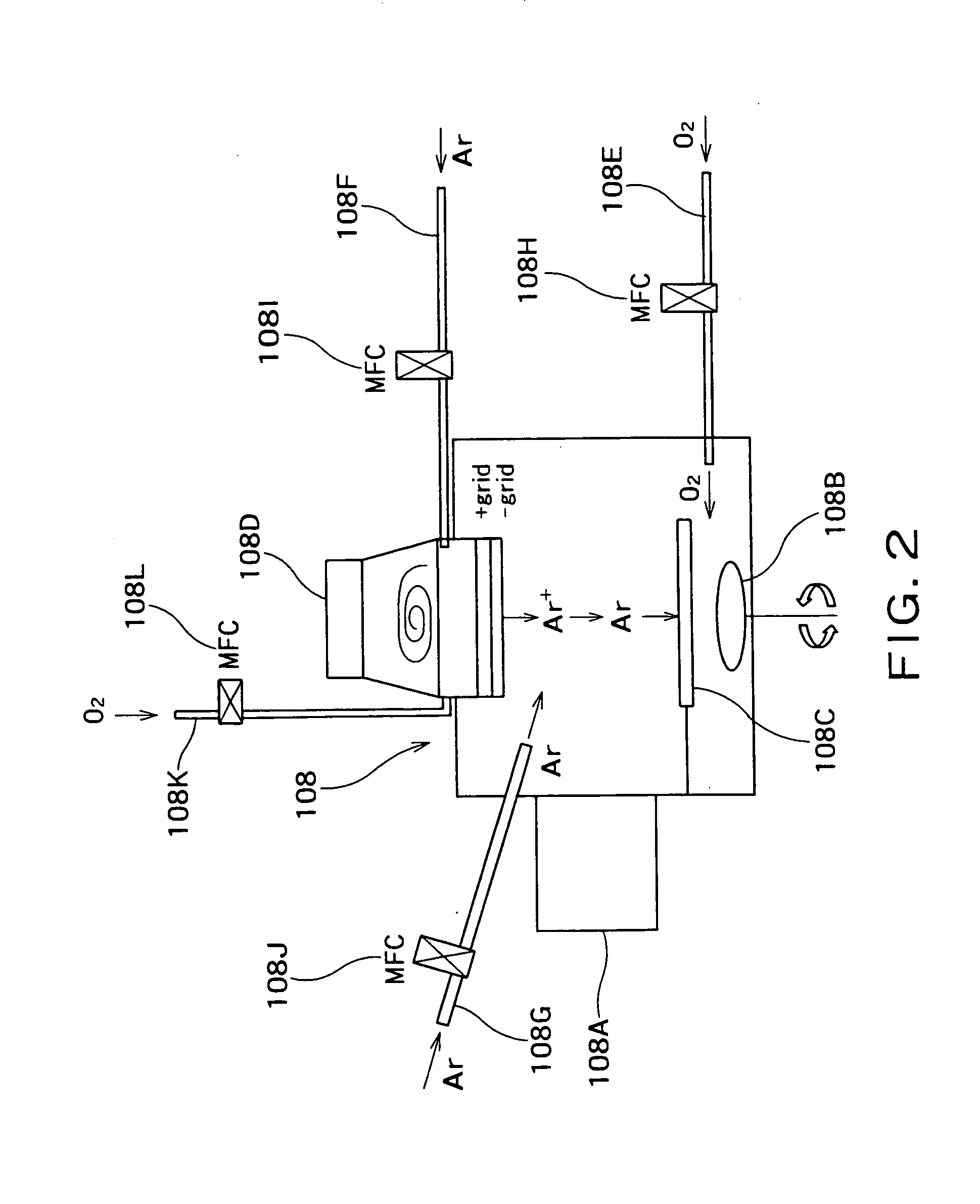Magnetoresistance effect element
a technology of magnetic coupling and effect element, applied in the field of magnetic resistance effect element, can solve the problems of weakened magnetic coupling via the nol, difficult to insert a nol into a pinned layer to maintain a high specular rate, and not so good specular ra
- Summary
- Abstract
- Description
- Claims
- Application Information
AI Technical Summary
Benefits of technology
Problems solved by technology
Method used
Image
Examples
first embodiment
[0118] First, as the first embodiment of the present invention, an example for applying a NOL based on oxidation at a small amount of oxygen using an IAO oxidation, to a magnetoresistance effect element having a spin-valve structure will be described below.
[0119] In this embodiment, a NOL-SPSV (NOL-specular reflection spin-valve) film having the following stacked structure was formed. A numeral in parentheses for each of layers denotes the thickness (nanometer) of the film.
Ta (2 nm)Cap LayerTaOReflective LayerCu (1 nm)High Conductive LayerCoFeNi (2 nm)Free LayerCu (2.2 nm)Non-magnetic Intermediate LayerCoFe (2 nm)Pinned layer {circle over (2)}NOLNOLCoFe (1 nm)Pinned layer {circle over (1)}PtMn (10 nm)Antiferromagnetic LayerNiFeCr (5 nm)Underlying Film {circle over (2)}Ta (3 nm)Underlying Film {circle over (1)}SubstrateSubstrate
[0120] In an actual head, an “alutic substrate” wherein amorphous alumina is coated on a shielding film is used as a substrate. However, a thermally oxidiz...
second embodiment
[0190] The second embodiment of the present invention will be described below. This embodiment relates to a process sequence when oxygen is fed to an ion source in an oxidizing chamber.
[0191]FIG. 6 is a conceptual drawing showing the construction of an oxidizing chamber capable of being used in this embodiment.
[0192]FIG. 7 is a flow chart showing a sequence of an oxidizing process which is carried out by using the oxidizing chamber of FIG. 6.
[0193] In FIGS. 6 and 7, the same reference numbers are given to the same elements as those which have been described above with respect to FIGS. 2 through 4, and the detailed descriptions are omitted.
[0194] As shown in FIG. 6, in the oxidizing chamber 108 in this embodiment, the oxygen feed system 108E is connected to the ion source 108, so that oxygen containing ions can be produced.
[0195] When such an oxidizing chamber 108 is used for carrying out the conventional IBO method, it is a first object to irradiate with oxygen plasma, so that ...
third embodiment
[0204] The third embodiment of the present invention will be described below. This embodiment relates to a process sequence when oxygen is fed in an oxidizing chamber having no independent ion source.
[0205]FIG. 8 is a conceptual drawing showing the construction of an oxidizing chamber capable of being used in this embodiment.
[0206]FIG. 9 is a flow chart showing a sequence of an oxidizing process which is carried out by using the oxidizing chamber of FIG. 8.
[0207] In FIGS. 8 and 9, the same reference numbers are given to the same elements as those which have been described above with respect to FIGS. 2 through 7, and the detailed descriptions are omitted.
[0208] As shown in FIG. 8, the oxidizing chamber 108 in this embodiment has no independent ion source. In place thereof, plasma is produced in the oxidizing chamber by means of a plasma producing electrode 108M which is connected to a plasma producing power supply 108L. The oxidizing chamber 108 is connected to an oxygen feed sys...
PUM
| Property | Measurement | Unit |
|---|---|---|
| thickness | aaaaa | aaaaa |
| thickness | aaaaa | aaaaa |
| thickness | aaaaa | aaaaa |
Abstract
Description
Claims
Application Information
 Login to View More
Login to View More - R&D
- Intellectual Property
- Life Sciences
- Materials
- Tech Scout
- Unparalleled Data Quality
- Higher Quality Content
- 60% Fewer Hallucinations
Browse by: Latest US Patents, China's latest patents, Technical Efficacy Thesaurus, Application Domain, Technology Topic, Popular Technical Reports.
© 2025 PatSnap. All rights reserved.Legal|Privacy policy|Modern Slavery Act Transparency Statement|Sitemap|About US| Contact US: help@patsnap.com



